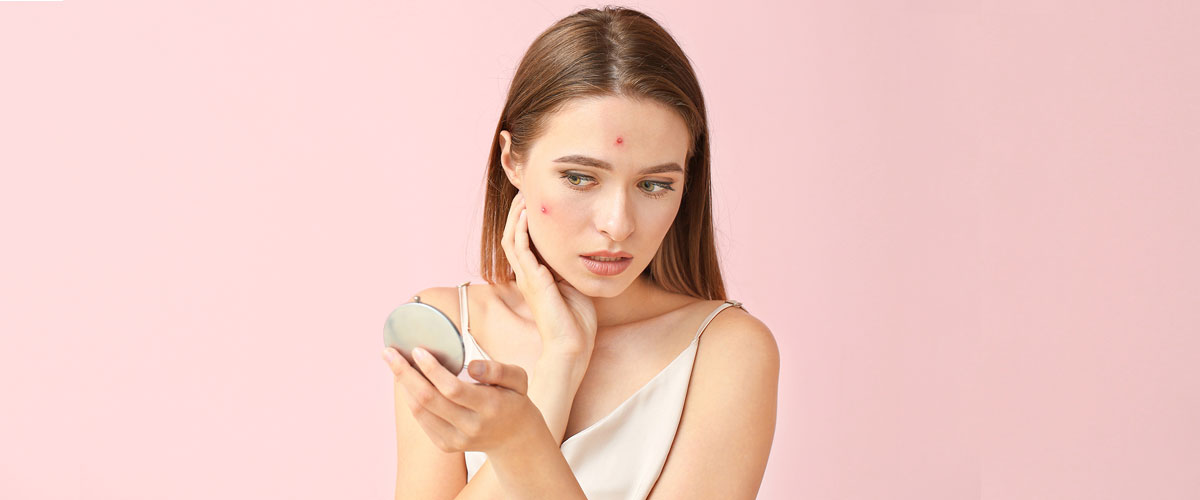Acne is the most common skin condition but despite its prevalence, it’s still a cause of much embarrassment, self-esteem issues and even depression. Surveys suggest that two-thirds of acne sufferers never speak to a doctor about their condition and the majority of those that do wait about a year before seeking help1. In this article, I’ll discuss some of the common over-the-counter acne treatments as well as factors that can trigger or worsen acne.
Before we begin, let’s get one thing clear: all the articles on the Internet are no substitute for talking to your doctor. There are several forms of acne and inadequate treatment can lead to permanent scarring so it’s always best to speak to your doctor early to discuss treatment options.
Diet and acne
There’s very little doubt that a link exists between acne and the modern Western diet, but pinpointing the culprits has proved to be a frustrating and controversial endeavour. We’ve all heard about the prime suspects: chocolate, dairy, oily foods, sugary foods, but how strong is the evidence?
Chocolate
Chocolate has long been implicated as an acne aggravator but it might surprise you to learn that there’s very little evidence to support it. In one study, people who ate chocolate bars containing 10 times more cocoa than standard bars were no more likely to develop pimples than the control group, who ate cocoa-free bars2. One of the reasons chocolate has the reputation it does could be that it contains two other culprits: dairy and sugar.
Dairy3
There have been suspicions about the role of dairy in acne since the 1940s. Milk and milk products contain hormones produced by cows during pregnancy. One of these hormones, insulin-like growth factor (IGF), stimulates the production of sebum. High levels of IGF in the blood plasma has been linked to an increased number of acne lesions. There is also evidence that skim milk is even worse for acne as some manufacturers add whey proteins to improve consistency which may also have an effect on acne.
High GI foods
Foods with a high glycemic index (GI) cause a spike in blood sugar and the body’s response is to release insulin to get things back under control. However, elevated insulin levels stimulate the release of androgens (e.g. testosterone) which increases sebum production3. What’s more, this game of endocrine see-saw causes an imbalance of IGF and its binding protein leading to increased cell-turnover, which, if you’ve read my previous article, you’ll know is one of the four main factors involved in the acne cycle. While there’s no definitive evidence that sugary, high GI foods cause acne, there is a strong suspicion that they have a significant effect3.
Oily foods
There’s no evidence to suggest eating oily or greasy food will make your acne worse. The only way it’s likely to cause trouble with your skin is if you spend a lot of time cooking with oils. Oil and grease from a deep fryer may stick to hairs and cause the follicles to become clogged4.
Other factors
A study of students’ skin before and after exams confirmed the role of stress in setting off acne5, and we should all know by now that squeezing or picking at spots will only make them worse. There’s also evidence that sweating and changing hormone levels associated with puberty and menstruation can cause acne to flare up6.
Choosing the right treatment
There are a number of treatment options for acne, depending on the type and severity, each with its own pros and cons. For moderate to severe acne, it’s important to discuss the available options with your dermatologist as prescription medication may be required.
However, for mild acne, some of the common over-the-counter treatments are benzoyl peroxide, salicylic acid and azelaic acid.
Benzoyl Peroxide
Benzoyl peroxide has been around since the 1930s and works by launching an oxidative attack on the stratum corneum (outermost) layer of the skin, forming free radicals that help reduce acne-forming bacteria7. Benzoyl peroxide is considered the standard treatment and works quickly, however, this comes at a cost. One study showed that vitamin E is lost from the skin barrier during treatment with benzoyl peroxide which, coupled with the oxidation of skin lipids might explain the frequent side effects of skin dryness and irritation7. Benzoyl peroxide also has the unfortunate effect of bleaching coloured fabrics and many a t-shirt, towel and pillowcase have been ruined as a result—casualties in the war on spots.
Salicylic acid
Salicylic acid is what’s known as a beta-hydroxy acid (BHA). Similar to its relatives, the alpha-hydroxy acids (AHAs), it helps exfoliate the skin and unblocks pores. Because salicylic acid is fat-soluble, it’s able to penetrate deeper into the skin than AHAs, where it also exerts an anti-inflammatory action1. Salicylic acid is generally considered superior to benzoyl peroxide in treating comedonal acne (blackheads and whiteheads without inflammation) but is less effective against inflammatory acne1.
Azelaic acid
Azelaic acid is considered the better option for sensitive skin because, while it doesn’t work as quickly as benzoyl peroxide, it has fewer side-effects7 and achieves the same outcome over 6 months8. It takes a multi-pronged approach in its attack against acne. It has an antikeratinising effect, meaning it helps break up blockages in the hair follicle, significantly reducing open (blackhead) and closed (whitehead) comedones7. Azelaic acid also has antimicrobial activity, was shown to reduce the concentration of the bacteria C. acnes and S. epidermidis, and has an anti-inflammatory effect9.
Azelaic acid is suitable for pimples and acne, blackheads and papulopustular rosacea.
Where to go from here
If you suffer from mild or occasional acne, examining your diet, trying to manage your stress and finding the right over-the-counter medication could be all you need to help get a handle on the condition. However, if you’ve been battling persistent acne for a while or have noticed your acne getting more severe, it’s time to start a conversation with your doctor.
Products related to this article that you may find helpful in addressing acne can be found here.

